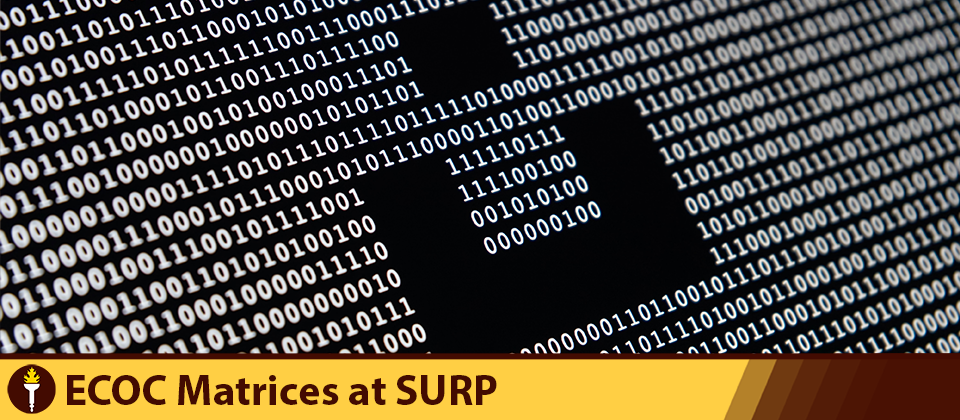ECOC Matrices at SURP
ECOC Matrices at SURP
ECOC Matrices at SURP
At the SURP Poster Session this past July, many research projects by Rowan’s students of Computer Science were shown off. Through the SURP program, the students were able to conduct research on a variety of topics and present their findings at the Poster Session. Some of these projects have already received dedicated articles on this website, but there is still one more notable project to cover. The project in question is “A Deterministic Algorithm for the Generation of N-array ECOC Matrices,” presented by Nicholas Kaegi.
As you could probably guess from the title, Nicholas’s project is about matrices. A matrix, put simply, is a table consisting of several rows and columns of data. The particular type of matrix Nicholas worked with is called an error-correcting output code matrix (ECOC matrix for short). This type of matrix is often used to assist in machine learning. The process of machine learning sometimes involves classifying data, often through the use of several algorithms working together. However, there’s always the possibility that at least one of the algorithms will make an error. ECOC matrices are good for spotting and correcting errors made by individual algorithms.
ECOC matrices are a helpful tool when it comes to classifying data and correcting errors, but they also have limitations. Sometimes, you’ll need a program to classify an extremely complex set of data. In these circumstances, generating the ECOC matrix can become extremely cumbersome. You’ll end up wasting a lot of time and money. What you’ll need is a way to simplify the process. This is what Nicholas’s research aims to achieve.
The focus of Nicholas’s research was on a type of algorithm for generating matrices called a deterministic algorithm. For an algorithm to be deterministic essentially means that it is not random. You could think of it as the opposite of random generation. Whereas random generation can lead to a system that is imprecise and costly, deterministic generation allows the programmer to have a little more control over things and create more cost-effective matrices. Also, there are many different types of deterministic algorithms, so it’s worth mentioning that the type used here was an algorithm that used something called a Hadmard matrix.
After testing the deterministic algorithm with a few different sets of data, Nicholas compared the results to that of a random algorithm. What he found is that the results for the deterministic algorithm were generally the same as or better than the random algorithm. This is good, as it means that the same results can be achieved using this cheaper method. It’s also worth noting that one of the tests conducted was with a 1000x1000 matrix. Testing the algorithm against such a potentially costly scenario is especially valuable.
That is the general idea of Nicholas’s project. As you can see, the SURP program was host to a varied collection of research projects, each with their own innovative ideas on display. We saw anomaly detection programs, smart home technology, optimization of city bike sharing solutions, and now deterministic generation for ECOC matrices. There’s no doubt that there was a lot of unique talent on display at the SURP event. That said, this was just a small glimpse into the vast world of Computer Science. There’s so much more to discover, so be sure to check in soon for more updates on what Rowan’s students are up to.
Written by Cole Goetz | Posted 2021.11.5
